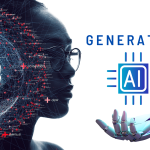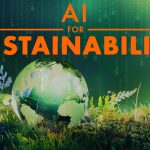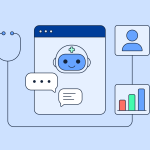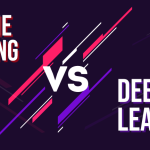Artificial Intelligence (AI) is not just revolutionizing industries it is becoming a powerful tool for sustainable development. By automating data analysis, improving efficiency, and optimizing resource use, AI is helping address some of the world’s most pressing environmental and social challenges. From climate modeling to smart agriculture, AI technologies are shaping a more resilient, inclusive, and sustainable future.
Table of Contents
Understanding Sustainable Development
Sustainable development refers to growth that meets the needs of the present without compromising the ability of future generations to meet their own. It focuses on three pillars: environmental protection, economic growth, and social inclusion.
The United Nations Sustainable Development Goals (SDGs), a set of 17 global objectives, guide efforts in eradicating poverty, ensuring clean energy, protecting ecosystems, and promoting equality. AI plays a crucial role in accelerating progress toward these goals by enabling smarter decision-making, automation, and predictive insights.
AI in Climate Change and Environmental Monitoring
Climate change is one of the most urgent global issues, and AI offers new ways to combat it. Machine learning algorithms can process vast amounts of satellite and sensor data to predict weather patterns, monitor deforestation, and track carbon emissions.
For instance, Google’s AI for Social Good initiative uses deep learning models to forecast floods and wildfires, helping governments and communities prepare in advance. Similarly, platforms like IBM’s Green Horizon Project analyze urban air quality data to recommend policies for cleaner cities.
You can explore real-world environmental AI projects at AI for Earth by Microsoft.
Smart Agriculture and Food Security
Agriculture consumes about 70% of global freshwater and contributes significantly to greenhouse gas emissions. AI helps make farming more efficient and sustainable. Using precision agriculture, farmers can leverage drones, sensors, and computer vision to monitor crop health, predict pest attacks, and optimize irrigation.
Tools like Plantix and John Deere’s AI-based analytics help farmers detect plant diseases early and make data-driven decisions. AI-powered irrigation systems reduce water waste, while predictive models forecast weather and soil conditions to improve yields.
Renewable Energy Optimization
AI is transforming how we produce, distribute, and consume energy. In renewable energy systems, machine learning models optimize power generation based on weather forecasts and demand patterns.
For example, Google DeepMind collaborated with wind farm operators to predict energy output 36 hours in advance, improving grid stability. Similarly, smart grids use AI algorithms to balance supply and demand in real time, minimizing waste and reducing costs.
Waste Management and Recycling
AI-driven image recognition and robotics are revolutionizing waste management. Smart sorting systems can identify materials on conveyor belts and separate recyclables from non-recyclables automatically.
Companies like AMP Robotics use computer vision and neural networks to improve recycling accuracy and efficiency. Meanwhile, machine learning models analyze waste collection data to optimize routes and reduce fuel consumption, cutting down the carbon footprint of waste management systems.
Water Resource Management
Water scarcity affects billions of people worldwide, but AI can help manage this limited resource more intelligently. Predictive analytics identify leaks in urban water systems, while satellite monitoring helps track drought-prone regions.
AI-based platforms like Hydrosat and Descartes Labs use remote sensing data to monitor soil moisture, predict rainfall, and optimize irrigation schedules. This ensures sustainable water distribution, particularly in agriculture-heavy regions.
AI for Biodiversity and Ecosystem Protection
Preserving biodiversity is essential for maintaining ecological balance. AI-powered systems analyze data from drones, sensors, and camera traps to monitor endangered species and track illegal activities like poaching or logging.
Projects such as Wildbook and PAWS (Protection Assistant for Wildlife Security) use computer vision and predictive models to protect wildlife in Africa and Asia. These tools empower conservationists with actionable insights, helping achieve SDG 15 (Life on Land) and SDG 14 (Life Below Water).
Ethical AI for Inclusive Growth
While AI offers enormous potential, it must be developed responsibly. Ensuring ethical AI means addressing bias, privacy, and accessibility issues. Sustainable AI requires energy-efficient models, transparency, and fairness in decision-making.
Organizations like UNESCO and the OECD have published ethical frameworks for AI to promote human-centered innovation. Building inclusive AI systems ensures that technology benefits developing countries, marginalized communities, and small-scale industries equally.
Challenges in Implementing AI for Sustainability
Despite its promise, AI faces several challenges in the sustainability domain:
- Data Accessibility: Many developing nations lack quality environmental data.
- Infrastructure Limitations: Running AI models requires high computing power and stable connectivity.
- Ethical and Regulatory Gaps: Lack of global standards can lead to misuse or bias.
Addressing these challenges requires international cooperation, funding for AI research in developing regions, and the promotion of open data platforms.
The Future of AI and Sustainable Development
AI’s integration into sustainability strategies will only deepen in the coming years. From carbon capture modeling to eco-friendly city design, future AI systems will be central to achieving the UN’s 2030 vision.
As industries adopt AI-driven circular economy models, waste will be minimized, resources reused, and environmental footprints reduced. The collaboration between AI researchers, governments, and sustainability experts will define how effectively we use technology to protect our planet.
Final Thoughts
Artificial Intelligence has emerged as one of the strongest allies of sustainable development. When implemented responsibly, it not only drives innovation but also ensures that progress remains equitable and eco-friendly.
AI empowers humanity to solve problems once deemed impossible predicting climate disasters, conserving biodiversity, and ensuring energy efficiency. By aligning AI innovation with sustainability goals, we move closer to a world where technology and nature thrive together.
For ongoing research and open-source AI sustainability projects, visit UNDP AI for Development and OECD AI Observatory.
Also Check New Emerging Technologies Shaping the Future for free 2025











1 thought on “The Role of Artificial Intelligence in Ultimate Sustainable Development – Guide 2025”